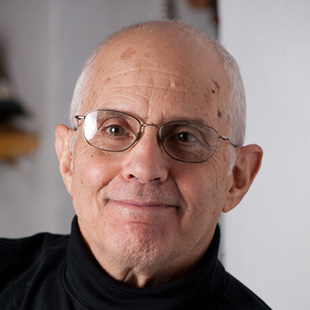"The promises of the spiritual life — peace, joy, love, wisdom, intimacy with the Divine — are real. They are attainable. The way to them is simpler and more direct than some would have you believe — and also more arduous and more baffling than is often depicted."
— Roadsigns on the Spiritual Path
"We can be only what we are. We can see only what we see, feel only what we feel. No amount of pretense, wishful thinking, or mood-alteration can bring us one step closer to truly seeing God in all things or feeling unconditional love for all beings. In other words, don't put the cart before the horse. ...
"Emulate the masters. Draw inspiration from saints. Bur remember that the way to Truth begins with the truth of right now, and where you are is the only place you can start from."
— Roadsigns on the Spiritual Path
"Whether fulfilling your desires supports or detracts from your spiritual life depends upon the nature of those desires and the consciousness you bring to their pursuit. In that regard, there is a self-correcting element on the spiritual path: As you move forward, the nature of your desires tends to change. Higher aims replace those driven by greed, power, or immediate gratification. Also, the urgency with which you pursue desires eases as you tap into the source of inner peace. And the anxiety of not attaining a particular desire relaxes as you realize that all satisfactions are transitory and their rewards are far less substantial than you once believed."
— Roadsigns on the Spiritual Path
"... [T]he same gurus who ran dysfunctional organizations, and perhaps engaged in unethical conduct, also consistently displayed love, compassion, humility, and kindness and bestowed upon their followers teachings that led to genuine growth and spiritual breakthroughs. For that reason, the scandals and cultish abuses became an important part of the curriculum. A generation of seekers was forced to learn sobering lessons about the pitfalls of spiritual dependency and the danger of elevating gurus to godlike status, exempt from the normal rules of social engagement. It also led to a collective inquiry into important issues about the nature of spiritual development and the relationship between higher consciousness and moral behavior."
— American Veda
"In the American spirit of autonomy and religious freedom, and the Vedantic spirit of personalized sadhana, religion is becoming both increasingly nonsectarian and increasingly individuated. ... This does not portend a do-your-old-thing spiritual anarchy, as traditionalists fear. Nor will organized religion disappear. It simply means that individuals are taking responsibility for their own relationship with the divine. The trend parallels the evolution of health care away from the physician-as-God model to one that sees patients as educated consumers who make autonomous decisions in consultation with experts. There will surely be backlash from the forces of exclusivism and triumphalism, but they are on the wrong side of history."
— American Veda
"In a talk to his disciples on his 56th birthday, Yogananda pointed out that few people quote the lines that follow Rudyard Kipling's famous assertion that East is East and West is West, and never the twain shall meet. Those lines read:
" 'But there is neither East nor West, Border, nor Breed, nor Birth,
When two strong men stand face to face, tho' they come from the ends of the earth!'
"Yogananda was a strong man from the East who crossed the earth to stand face to face with the mighty West, saying 'Namaste' with hands joined at his chest. But he was of neither East nor West. He represented the universal Spirit that knows no border, breed, or birth. Through the strength of his character and his skillful transmission of perennial wisdom, he showed the way for millions to transcend those and other barriers to the liberation of the soul."
— The Life of Yogananda
